This semester, SLS was pleased to sponsor several students to attend national conferences, including the Engineers Without Borders-USA national conference, the Clinton Global Initiative University (CGIU) conference, and the Association for the Advancement of Sustainability in Higher Education (AASHE) conference. We are pleased to share the perspectives of the students who attended: Tanvi Suresh (CGIU); Eli Derrington (EWB-USA); Sanmi Toyobo (EWB-USA); Michelle Henriques (AAHSE); and Natalie Chu (AASHE).
Connecting to the Sustainable Development Goals at the Clinton Global Initiative University Conference
By: Tanvi Suresh
This October, I had the chance to attend the 10th annual Clinton Global Initiative University (CGI U) conference along with 1,000 other college students around the world. Everyone at the conference made Commitments to Action towards advancement, addressing key issues in Education, Environment and Climate Change, Peace and Human Rights, Poverty Alleviation, and Public Health.
One of the panels in the conference, “Making it: Designing a Healthy and Sustainable Future,” introduced key ideas of the Sustainable Development Goals (SDGs) on a personal, individual level. The SDGs are similar to the targets in the Millennium Development Goals as they are focused on a global course of action to end poverty and ensure prosperity. However, they differ in their special emphasis in protecting the environment and addressing climate change. These goals include climate action, sustainable cities and communities, and responsible consumption and production. Many of these goals seem lofty to the average person, as mainly targets for city and national governments or international organizations. While the success of these goals does lie partly in these entities, I think that every single person should be able to connect to these goals and feel responsible for its overall success. There are some key aspects that I would like to share that I heard in this panel, that I think could convince anyone that they need to care about these goals.
1. “Environmental protection is a responsibility no different than equality.”
Lisa Jackson, the Vice President of Environment, Policy, and Social Initiatives at Apple, made a very compelling argument for how people should look at environmental protection. Ms. Jackson connected social justice to environmental protection. She reminded us that the right to clean air and water is fundamentally a right, especially if you connect that lack to the subsequent lack of health equity. If you don’t have clean air to breathe and clean water to drink, your body cannot be healthy. “When you make that connection, environmental protection goes from being a privilege for wealthy people who want to look out onto the beautiful mountains and valleys, to a responsibility. It is a responsibility no different than equality, no different than life, liberty and the pursuit of happiness.”
2. Saving nature is about saving ourselves.
Dr. M. Sanjayan, CEO of Conservation International, showed another argument that connects people to the environment. One way is to remind people that saving nature is actually about saving ourselves. The environment will live on. Nature, biodiversity, and life at its most basic levels will continue, but humanity might not. “If we don’t make equity all of our responsibilities, we’re not going to actually achieve the equity that we think is important. Sustainability is about availability. At the end of the day, saving nature is really about saving ourselves.”
3. “Being innovative is not just about creating a new tool/therapy but it’s about supplying needs to clinical deserts. We need innovation in how even basic life services are supplied around the world.”
Lastly, the world-renowned doctor and public health activist, Dr. Paul Farmer, Chief Strategist and Co-Founder, Partners In Health, spoke about what he thought the most innovative ideas were and how he also ties social justice with public health. “We need social justice; we need delivery of material services in health, education, clean water, cheaper electricity still living in poverty. It would be so innovative to deliver the basics in clinical and public health deserts. This is a fight to make the planet a more healthy, and thus a more equal place to live.”
Dr. Farmer, Ms. Jackson, and Dr. Sanjayan all echoed how an individual person can connect to the fight for a healthier population and planet. Chelsea Clinton stated in summary that, “Conservation is not something of the purview of the wealthy or the responsibility of the people who live in the most stressed of locations.” As future engineers, doctors, scientists, artists, developers, and entrepreneurs, we will be creating processes in which it’s our responsibility to make sure they are sustainable, produce minimal waste, and encourage a healthier and more equal world. It’s a fight that we all should take responsibility to participate in, and viewing the SDGs in this light can hopefully encourage more people to play an active part.
To see the full video of the panel: https://livestream.com/CF/cgiu2017/videos/164255208
To see more about SDGs: https://tinyurl.com/z4o6pk4
Engineers Without Borders-USA National Conference
By: Eli Derrington
Thanks to the SLS Office at Georgia Tech, I was provided the opportunity to travel to this year’s Engineers Without Borders USA Conference in Milwaukee, Wisconsin. While at the conference, I attended presentations from outside speakers as well as EWB members from chapters across the nation. It was a great experience listening to everyone and hearing about the methods they have used and lessons they have learned.
The first, and one of the most interesting, presentations was about the various forms of leadership. The speaker used the example of Rosa Parks’s bus protest to show the different ways a person can lead. Her protest is typically taught as a single person’s stand against an unjust system, but the speaker showed how it took the leadership of many people to reach the point of her protesting and finish the fight that she participated in. It was a great start to the conference, showing that every member of an EWB chapter or project team can be a leader in completing their mission.
Following this presentation, I attended sessions led by members of many EWB projects. As a member of the Jamaica water distribution project here at Georgia Tech, I first went to other water project sessions and listened to EWB members explain how they created and sanitized water systems in rural communities. I also went to sessions about the intersection of engineering and the social sciences. People spoke on the importance of considering the context of the community when assessing and implanting the project. You need to be aware of how you are working while onsite so that you do everything in the most effective way and foster the best relationship possible with community members. Finally, the last session I attended was about the United Nations Sustainable Development Goals and how each project incorporates several of the goals, which include Clean Water and Sanitation; Affordable and Clean Energy; Industry, Innovation, and Infrastructure; and Sustainable Cities and Communities. This session made me realize that the work the project I’m on is more than just a water project. We are helping our community in Brae Head build sustainable infrastructure that will benefit the community members for many years down the road.
Overall, I greatly enjoyed my time at the conference. It was fascinating to see the many varieties of EWB projects, from bridge building to water distribution and sanitation to renewable energy. I left Milwaukee even more proud to be a member of EWB and excited to continue work on my project at Tech.
Engineers Without Borders-USA National Conference
By: Sanmi Toyobo
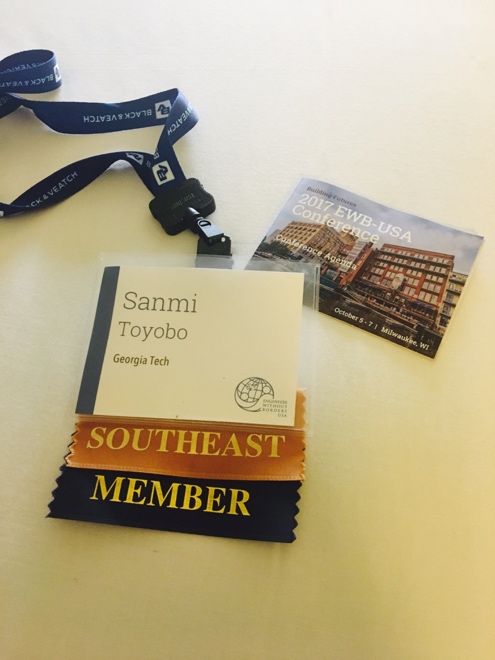 During the past week, I attended the 2017 Engineers Without Borders – USA Conference and it was a phenomenal experience. It was a two-day affair in Milwaukee, WI in which I attended workshops, participated in thoughtful discussions and learnt invaluable lessons from my peers and professionals. Thanks to Serve-Learn-Sustain I received a scholarship which enabled me to take advantage of this opportunity.
During the past week, I attended the 2017 Engineers Without Borders – USA Conference and it was a phenomenal experience. It was a two-day affair in Milwaukee, WI in which I attended workshops, participated in thoughtful discussions and learnt invaluable lessons from my peers and professionals. Thanks to Serve-Learn-Sustain I received a scholarship which enabled me to take advantage of this opportunity.
Engineers Without Borders – USA is a huge organization with roughly 300 different student and professional chapters in the United States alone. At this conference, these chapters were represented and I had the chance to meet passionate students and experienced professionals all committed to engineering change. Over the two days, I listened to keynote speeches delivered by leaders in their fields about the importance of leadership, community building and other areas in the United States of America that were in desperate need for assistance that engineers could provide.
I also listened to presentations by fellow students at other Engineers Without Borders chapters about their own international projects. They explained in detail the amazing feats they accomplished and shared their lessons learned - but they also shared their failures too. They gave me invaluable insight into the strategies that their teams developed and used, as well as ways in which they would make their strategies better in the future.
At this conference, I attended more technical workshops too – one of which I gave me an effective crash course on solar electricity design and applications! I’m so grateful to have had this opportunity to meet and learn from such inspirational people. I’m excited to share the knowledge I’ve gained over the past two days with the Engineers Without Borders Georgia Tech Chapter and the rest of the Georgia Tech community too!
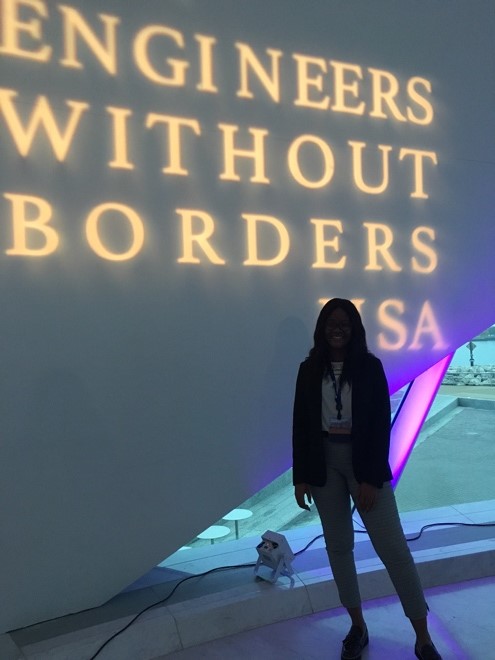
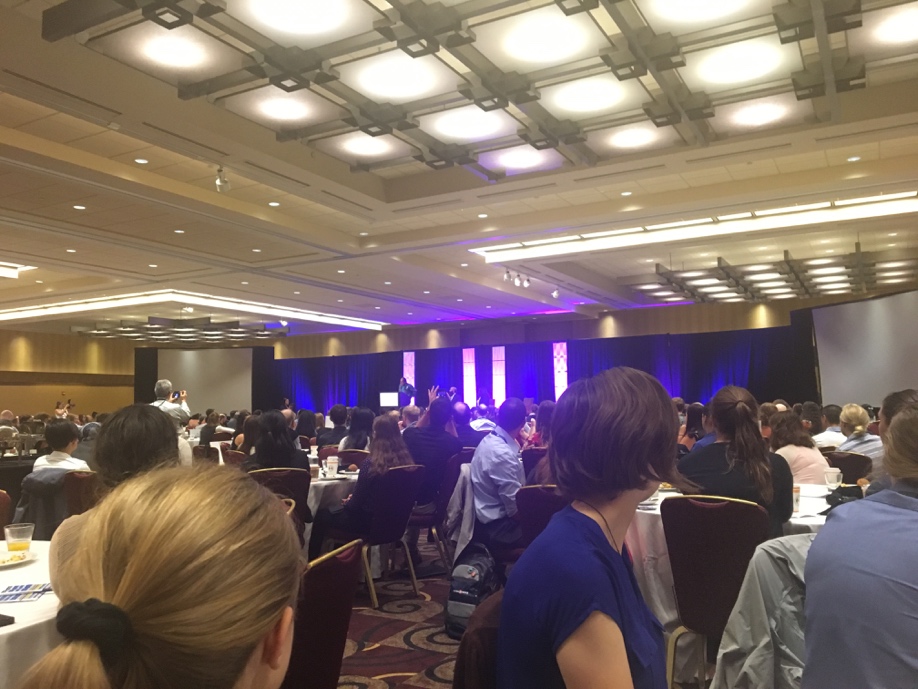
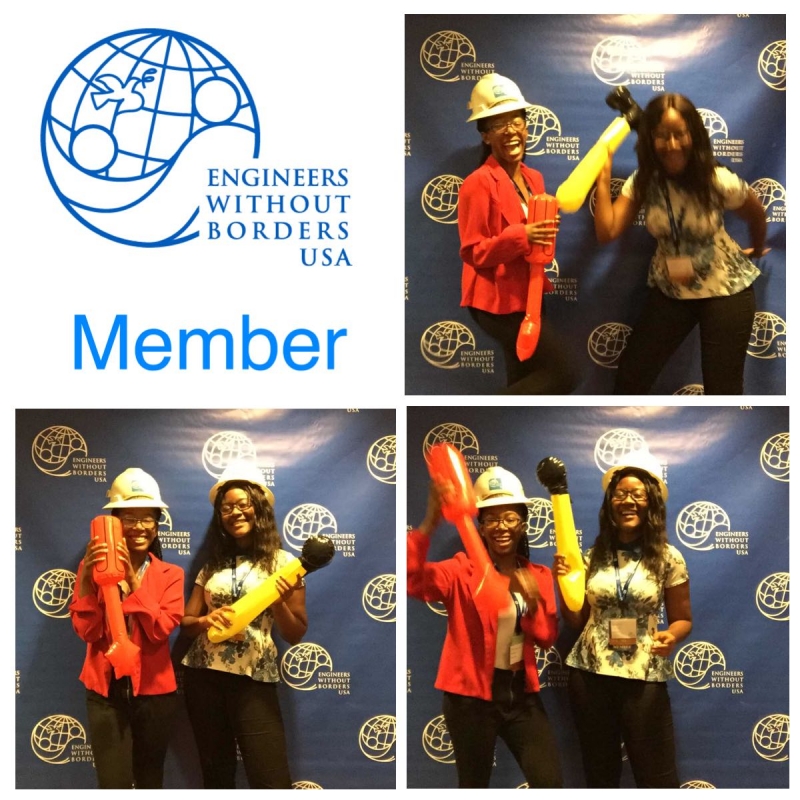
Association for the Advancement of Sustainability in Higher Education (AASHE) Conference
By: Michelle Henriques
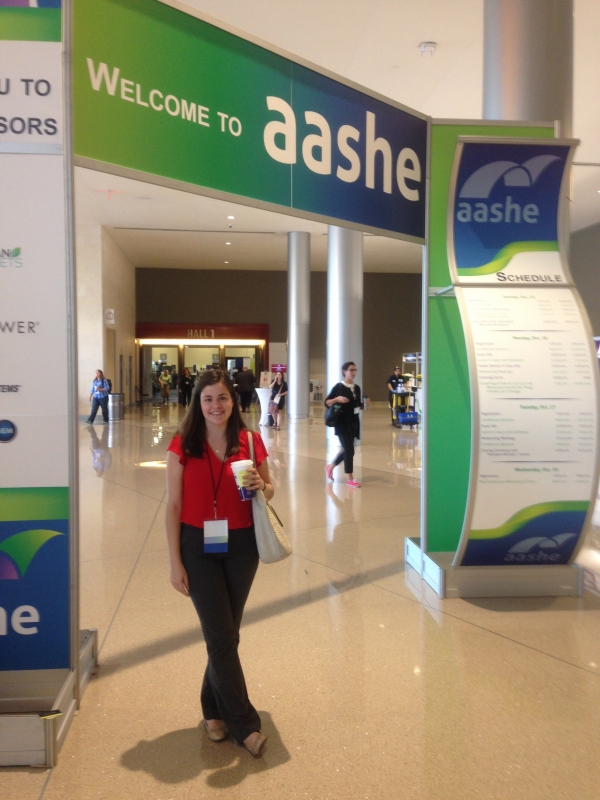 The 2017 Association for the Advancement of Sustainability in Higher Education (AASHE) Conference in San Antonio, Texas is an event I never saw Georgia Tech leading me to as a first-year 2 years ago. To be completely honest I didn’t know what AASHE was until 6 months ago. Last Spring I was invited by Jenny Hirsch and Kris Chatfield to participate in presenting a session at AASHE focused on curricular and co-curricular student engagement in a technical university setting because of my experience with Serve-Learn-Sustain since Fall 2015. What experience do I have with SLS exactly and why is it so important to me? This is what I spoke about in a panel discussion alongside other GT staff and students for the 60 minute session I had the opportunity to be a part of. I worked with SLS before it was in its’ first full academic year through a service-learning English course “The Art of Advertising” in which I worked with a small team to building a marketing package for SLS. The following semester I not only enrolled in one of SLS’ foundation courses “Introduction to Sustainable Systems and Communities” and an affiliated English 2 course “Ecomedia” but also began working for SLS as a student assistant particularly focused on their social media and marketing efforts. The foundation course taught by 4 professors of different fields was a pivotal course in my college career because I can honestly say that was the first time I gained and utilized a systems thinking approach. My civil engineering degree now had a meaning deeper than a life doomed to mindless math calculations – whatever I end up doing with my Georgia Tech degree I know it has the power to benefit people and the environment!
The 2017 Association for the Advancement of Sustainability in Higher Education (AASHE) Conference in San Antonio, Texas is an event I never saw Georgia Tech leading me to as a first-year 2 years ago. To be completely honest I didn’t know what AASHE was until 6 months ago. Last Spring I was invited by Jenny Hirsch and Kris Chatfield to participate in presenting a session at AASHE focused on curricular and co-curricular student engagement in a technical university setting because of my experience with Serve-Learn-Sustain since Fall 2015. What experience do I have with SLS exactly and why is it so important to me? This is what I spoke about in a panel discussion alongside other GT staff and students for the 60 minute session I had the opportunity to be a part of. I worked with SLS before it was in its’ first full academic year through a service-learning English course “The Art of Advertising” in which I worked with a small team to building a marketing package for SLS. The following semester I not only enrolled in one of SLS’ foundation courses “Introduction to Sustainable Systems and Communities” and an affiliated English 2 course “Ecomedia” but also began working for SLS as a student assistant particularly focused on their social media and marketing efforts. The foundation course taught by 4 professors of different fields was a pivotal course in my college career because I can honestly say that was the first time I gained and utilized a systems thinking approach. My civil engineering degree now had a meaning deeper than a life doomed to mindless math calculations – whatever I end up doing with my Georgia Tech degree I know it has the power to benefit people and the environment!
Throughout the conference, being surrounded with people from all aspects of college campuses was unbelievably mind opening and thought provoking. Seeing students from small liberal arts colleges to STEM focused, research institutes like Tech go above and beyond doing amazing things was inspiring. One thing I particularly appreciated throughout the conference was everyone presenting whether it be a 30 minute session, 60 minute session, or poster was focused on how any one of us listening could bring those projects and concepts to our universities. For example, a session on a hydroponics project offered solutions on creating a student green fund, hydroponic location, companies to get equipment from, and ideas for working with dining services to best utilize the hydroponic produce.
There were so many interesting sessions it was hard to choose how to spend my limited time there! As a Resident Advisor here at Tech a session titled “Readdressing Environmental Thinking in Residence Hall Design” piqued my interest. Simple, often overlooked characteristics like access to a river nearby that students enjoyed or common student locations within the city and the design of the hallways – whether to include an alcove at every apartment door that allowed residents to hang out a bit, or the amount of shared space among residents in an individual suite and throughout an entire floor, impacted how much engaged residents felt in a community. The case studies proved campus residence halls offer the opportunity to promote sustainable living and learning. Another session I attended interested me because it involved using social media to engage students in sustainability challenges. A professor at the University of Buffalo created the #447challenge in which he asks students in his general sustainability course to be global examples of sustainability through weekly Twitter challenges (Ex. #NoMeatWeek, #wasteLESSweek, and #emissionLESS) so that the class, campus, city , and global sustainability community can see. I quickly drew parallels to how I can incorporate social media challenges to SLS’ social media efforts to engage more students at Georgia Tech.
I am incredibly grateful that the Center for Serve-Learn-Sustain offered me the amazing opportunity of attending the AASHE conference. The 3 day conference reenergized my love and dedication to sustainability. It motivated me to further achieve SLS’ goals and improve the campus sustainability efforts at Georgia Tech in order to fulfill our motto of progress and service – in this case towards building a healthy and equitable future for all.
Association for the Advancement of Sustainability in Higher Education (AASHE) Conference
By: Natalie Chu
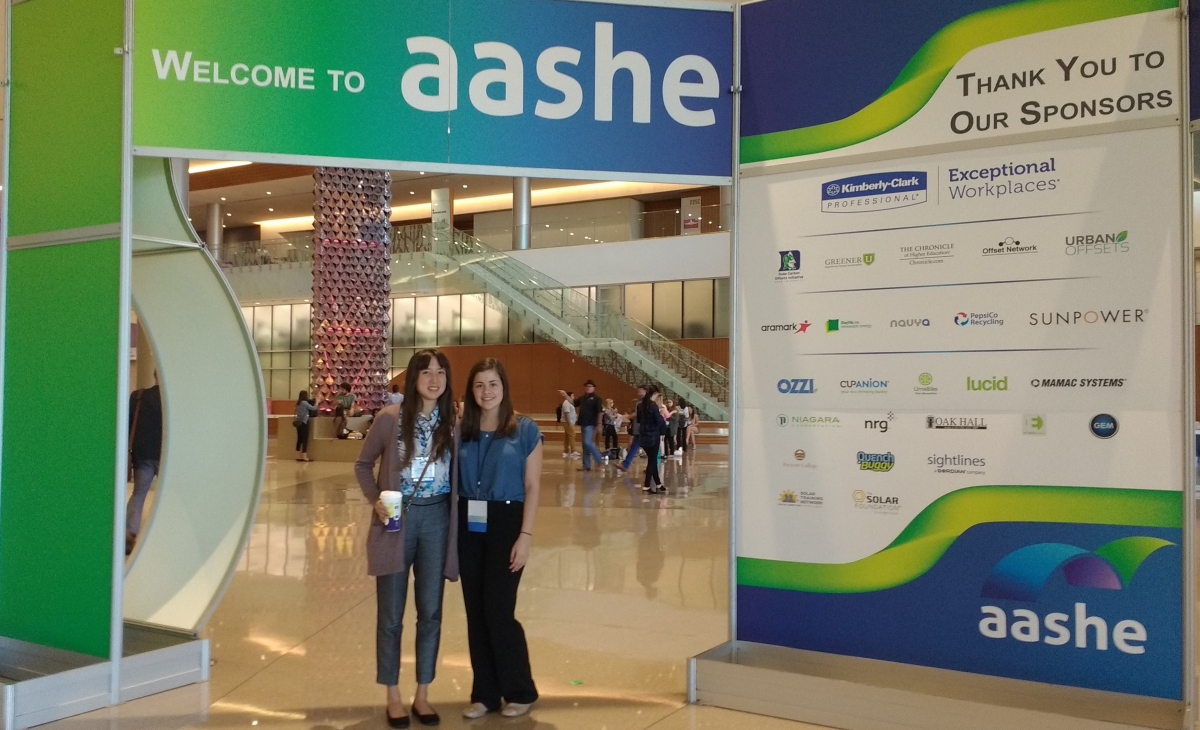 Hello everyone, my name is Natalie Chu and I was fortunate enough to attend the AASHE conference in San Antonio with other GT staff and students. Overall I found the conference to be very inspiring! At times it was overwhelming when I heard all this data about how our planet is kind of screwed if we don’t do anything to alter our current course, but the number of projects other people are doing to bring sustainable habits to their campuses and communities is quite lifting.
Hello everyone, my name is Natalie Chu and I was fortunate enough to attend the AASHE conference in San Antonio with other GT staff and students. Overall I found the conference to be very inspiring! At times it was overwhelming when I heard all this data about how our planet is kind of screwed if we don’t do anything to alter our current course, but the number of projects other people are doing to bring sustainable habits to their campuses and communities is quite lifting.
For background, GT sent me to this conference because I helped organize an energy saving competition on campus within a first-year dorm (I know, only one?? Well, it was our first one and we wanted to see how GT students would do—and they passed with flying colors! We also wanted to test our metering hardware.) I presented on this as part of a panel on Tuesday morning. Because my project is energy focused, I went to a lot of panels focused on other energy competitions and energy dashboards (a website that students and facilities can view energy usage data on.) I also attended other panels on hydroponics, social motivators, and campus dining.
The campus dining panel made me realize how much the meat industry contributes to climate change and how campus dining services could include menus that reduce meat and increase plant-based proteins. The Better Burger challenge (http://www.betterburgers.org/ ) is one of those ways. 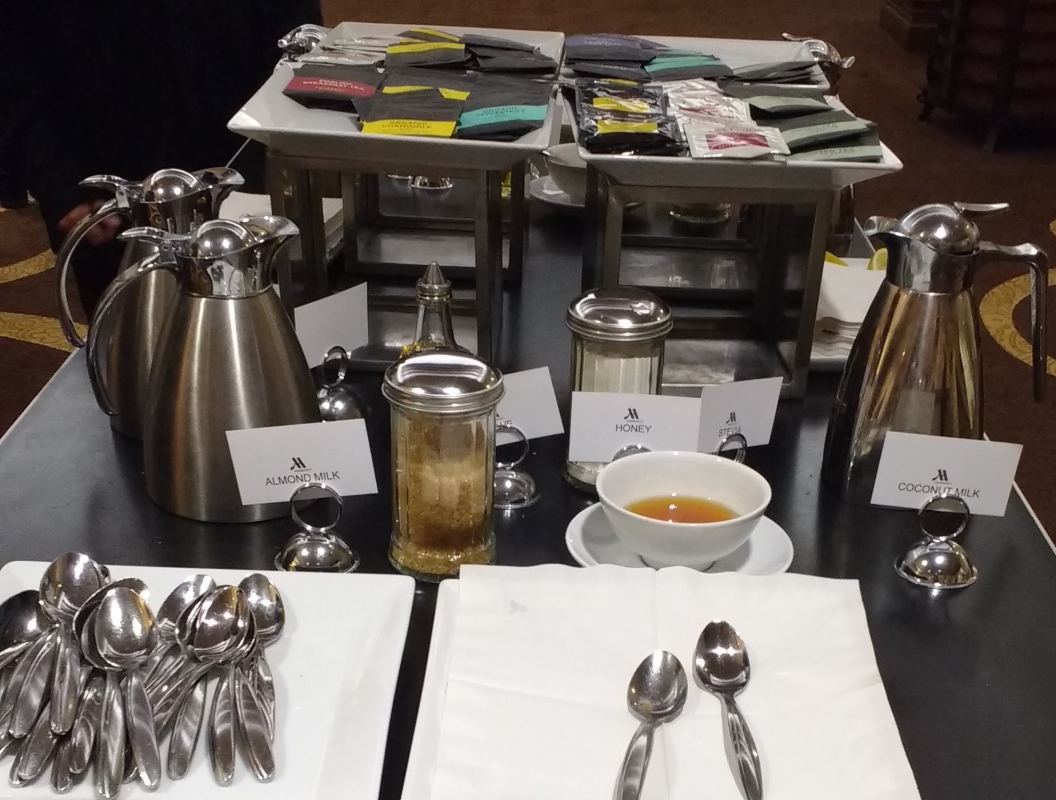 TLDR: make your burgers 30-50% mushrooms and/or other veggies and the rest ground meat. Truthfully I don’t make burgers very often, but I did get a chance to try this at a homecoming tailgate and I loved it! I was also pleasantly surprised that the entire conference was vegetarian. All the lunches, the one dinner, and all the milk/cheese products were vegetarian or vegan. They didn’t even have dairy milk for coffee! I admire their commitment and example.
TLDR: make your burgers 30-50% mushrooms and/or other veggies and the rest ground meat. Truthfully I don’t make burgers very often, but I did get a chance to try this at a homecoming tailgate and I loved it! I was also pleasantly surprised that the entire conference was vegetarian. All the lunches, the one dinner, and all the milk/cheese products were vegetarian or vegan. They didn’t even have dairy milk for coffee! I admire their commitment and example.
I also attended the student summit the first day of the conference. This portion of the conference was just focused on students and I met a lot of students from other universities who were presidents of their SGA sustainability councils, sustainability committees, recycling programs, etc. I connected with other students who are also in the process of starting energy saving competitions within first-year dorms and shared what I had learned along throughout my process of doing so. I also saw that smaller colleges generally have an easier time implementing sustainability programs on campus than larger ones, like Georgia Tech.
I think the panel that I liked the most from the student summit was on integrating sustainability things into first-year orientations. I thought this was a great idea and there were universities that shared how well it worked for them. Having FASET teach new students how, where, and what to recycle would not only help people reduce waste in landfills, but also instill the social expectation of “hey, we do this here and we care about it.” It might also push GT to have better and more available recycling and composting.
Overall, 10/10 would do again.